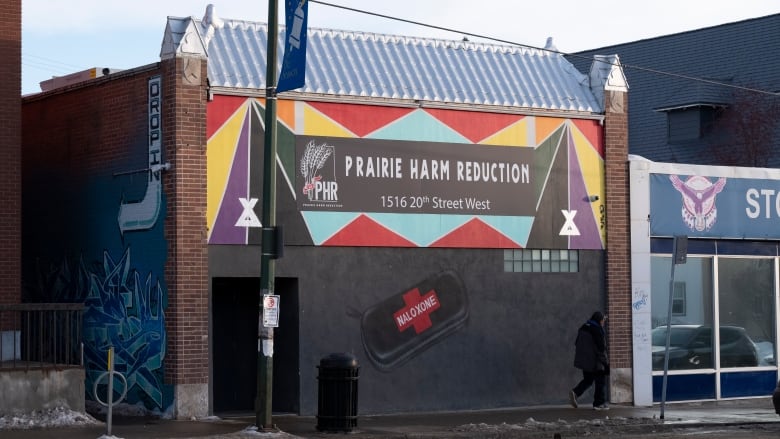Saskatchewan's HIV numbers remain the highest in the country.
Latest provincial health data reveals a record-breaking 237 diagnoses in 2021 — a nearly 30 per cent jump from the 184 cases recorded in 2020, which puts transmission rates at more than double the national average.
"It's unfortunate, and — even though we talk percentages — those are real individuals," said Dr. Johnmark Opondo, a medical health officer on Saskatchewan's HIV provincial leadership team.
According to the Ministry of Health, sexual contact contributed to 68 per cent of HIV cases (which is higher than usual for the province) and injection drug use made up 50 per cent. These risk factors are not mutually exclusive.
Still, Opondo maintains needle sharing is a primary driver.
"Sexual encounters are very risky if you're not using protection and you're not with your steady, regular partner — but injection drug use, if you're not practicing safe needle use, even a single episode can be enough to transmit HIV," he explained.
Safe consumption sites key in containing HIV: doctor
Opondo says harm reduction services, like safe drug consumption sites, are among the key preventative elements that can help contain the province's HIV numbers.
Kayla DeMong, executive director of Prairie Harm Reduction (PHR) in Saskatoon, agrees.
She calls last year's HIV numbers "heartbreaking," noting they speak to the need for more facilities like PHR in Saskatchewan and why provincial funding is needed to run them.
"With each HIV transmission that we can prevent at our site, we know that we are saving the health-care system huge dollars," DeMong said.

For three years in a row, the Saskatchewan government has denied PHR's request for funding amid a ballooning overdose crisis. To stay open, it relies solely on donations and merchandise sales.
"The individuals that we are serving here are people who are affected by homelessness, they have complicated health issues, complicated mental health problems and they're not engaged in a lot of services in our community," DeMong explained.
"The more investment that we can have toward this population, the better impact we'll see in lowering [HIV] transmission rates."
PHR doesn't offer people drugs but provides a space where they can use them under medical supervision. The site can also check drugs for laced substances, and help people get access to sterile equipment and supports.
"It's a life-saving service," Opondo said.
Education, testing among best preventatives
While intravenous drug use is considered a primary driver in Saskatchewan's HIV numbers, Dr. Larissa Kiesman — a family physician and the medical director at Westside Community Clinic in Saskatoon, a hub for HIV care — says people shouldn't lose sight of other risk factors.
She says last year's high rate of sexual transmission shows the virus is spreading widely in non-drug users as well.
"To isolate this as a problem amongst people who inject drugs is not appropriate," Kiesman said.
"We're seeing a lot of transmission in people who have never used intravenous drugs — and they're very, very shocked by this diagnosis."
LISTEN | Sask. infectious diseases doctor weighs in on record-breaking HIV spike:
The Afternoon Edition - Sask8:00Sask. infectious diseases doctor weighs in on record-breaking HIV spike
Robin Hilton, the sexual health outreach co-ordinator with the University of Regina Students' Union, says the spike in sexual transmission of HIV can be linked to a lack of updated sex education in schools.
"If we have that ability right from that foundation to have conversations about sexual health and to feel comfortable going for [HIV] screenings, then we're getting off on a right foot," Hilton said.
"We know that with HIV, knowing your status is the best possible way to prevent spreading the infection."
That's where testing comes in.
Throughout the pandemic, Saskatchewan has seen a dramatic decrease in HIV testing. There were 78,858 tests performed in 2021 — up slightly from the 71,681 in 2020, but still down from the 93,832 in 2019.

In January, the Saskatchewan government made HIV self-test kits available at pharmacies and community-based organizations across the province, aiming to aid with early diagnosis.
Kiesman says she hopes that helps the province bounce back to pre-pandemic testing levels.
However, she added, that comes with an inevitable influx of cases, and the provincial government would need to put its nearly $6-million HIV strategy in action and allocate the appropriate amount of resources to deal with it.
Through testing, early diagnosis and treatment, Kiesman believes there's a chance the province can one day come close to eradicating HIV.
"We know because of COVID that we can do this kind of work; we can identify issues and we can be responsive," she said.
"We just have to be very proactive. This is a public health urgency — it's a public health crisis."
Sask. continues to lead Canada in HIV transmission, posts record infections in 2021 - CBC.ca
Read More

No comments:
Post a Comment